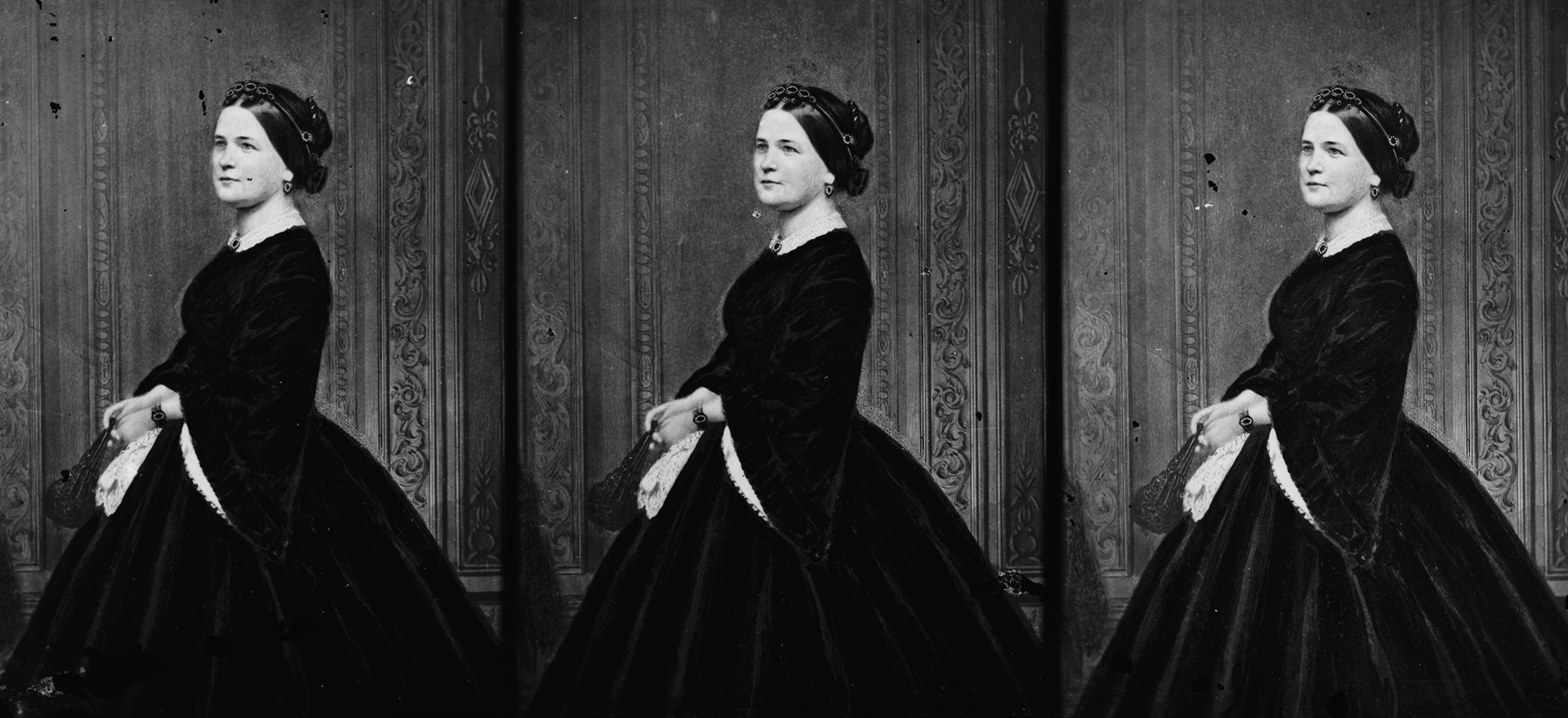
Mary Todd Lincoln, c. 1860. Library of Congress, Prints and Photographs Division, Brady-Handy photograph collection.
Each issue of Lapham’s Quarterly addresses a theme—States of War, States of Mind, Food, Youth, Animals—by drawing on primary sources throughout history, finding the rhymes and dissonances in how these topics have played out and been perceived over the centuries. In this series, we open up the sleuthing beyond our staff and four annual themes by letting historians and writers share what they have come across in their recent visits to the archives.
This week’s selection comes from LeAnne Howe, author of Savage Conversations, now available from Coffee House Press.
The journey of writing Savage Conversations began some nine years ago when I visited the Abraham Lincoln Presidential Library and Museum in Springfield, Illinois. At the time I was a professor at the University of Illinois in Urbana-Champaign. Lincoln was lionized by Illinoisans, yet little was said of Lincoln’s sanctioned hanging of thirty-eight Dakota Indians in December 1862.
On my first field trip to the museum I bought several books about the Lincolns. One of them was The Insanity File: The Case of Mary Todd Lincoln by Mark E. Neely Jr. and R. Gerald McMurtry. Their book revealed a great deal about Mary Todd Lincoln’s mental illnesses in 1875, but said little about why she claimed that an American Indian visited and tortured her nightly.” According to her own account, an “Indian spirit” was removing wires from her eyes, “especially the left one, and the bones from her cheeks.” Had an American Indian accosted her as a child? I could not find any evidence that she had.
But I continued my research another year, returning to the Lincoln museum and talking to prominent Lincoln and Todd scholars for clues into why Mary believed an Indian spirit was persecuting her.
Mary was from a wealthy Kentucky family, attended boarding school as a young girl, and was eventually courted by two rivals: Stephen A. Douglas, and Abraham Lincoln. After studying her life, I discovered another side of Mary Todd Lincoln that permeates Savage Conversations. Mary was a laudanum addict, and I believe the drug, not repulsion, fueled her nightly visions of American Indians. There’s of course more to her story, but uncertainties lingered for me. All these questions helped to create the fictional work Savage Conversations.
Many other books were important to the writing of Savage Conversations, including The Madness of Mary Lincoln (2007) by Jason Emerson, Mary Todd Lincoln: A Biography (1987) by Jean H. Baker, and House of Abraham: Lincoln and the Todds, a Family Divided by War (2007) by Stephen Berry.
Want to read more? Here are some past posts from this series:
• Lucy Inglis, author of Milk of Paradise: A History of Opium
• Chris Cander, author of The Weight of a Piano
• Rosellen Brown, author of The Lake on Fire
• Patricia Miller, author of Bringing Down the Colonel
• Monica Muñoz Martinez, author of The Injustice Never Leaves You
• John Wray, author of Godsend
• Imani Perry, author of Looking for Lorraine
• Ken Krimstein, author of The Three Escapes of Hannah Arendt: A Tyranny of Truth
• Scott W. Stern, author of The Trials of Nina McCall
• Katherine Benton-Cohen, historical adviser for the film Bisbee ’17
• Victoria Johnson, author of American Eden
• Anna Clark, author of The Poisoned City: Flint’s Water and the American Urban Tragedy
• Christopher Bonanos, author of Flash: The Making of Weegee the Famous
• Linda Gordon, author of The Second Coming of the KKK
• Elizabeth Catte, author of What You Are Getting Wrong About Appalachia
• Ben Austen, author of High-Risers: Cabrini-Green and the Fate of American Public Housing
